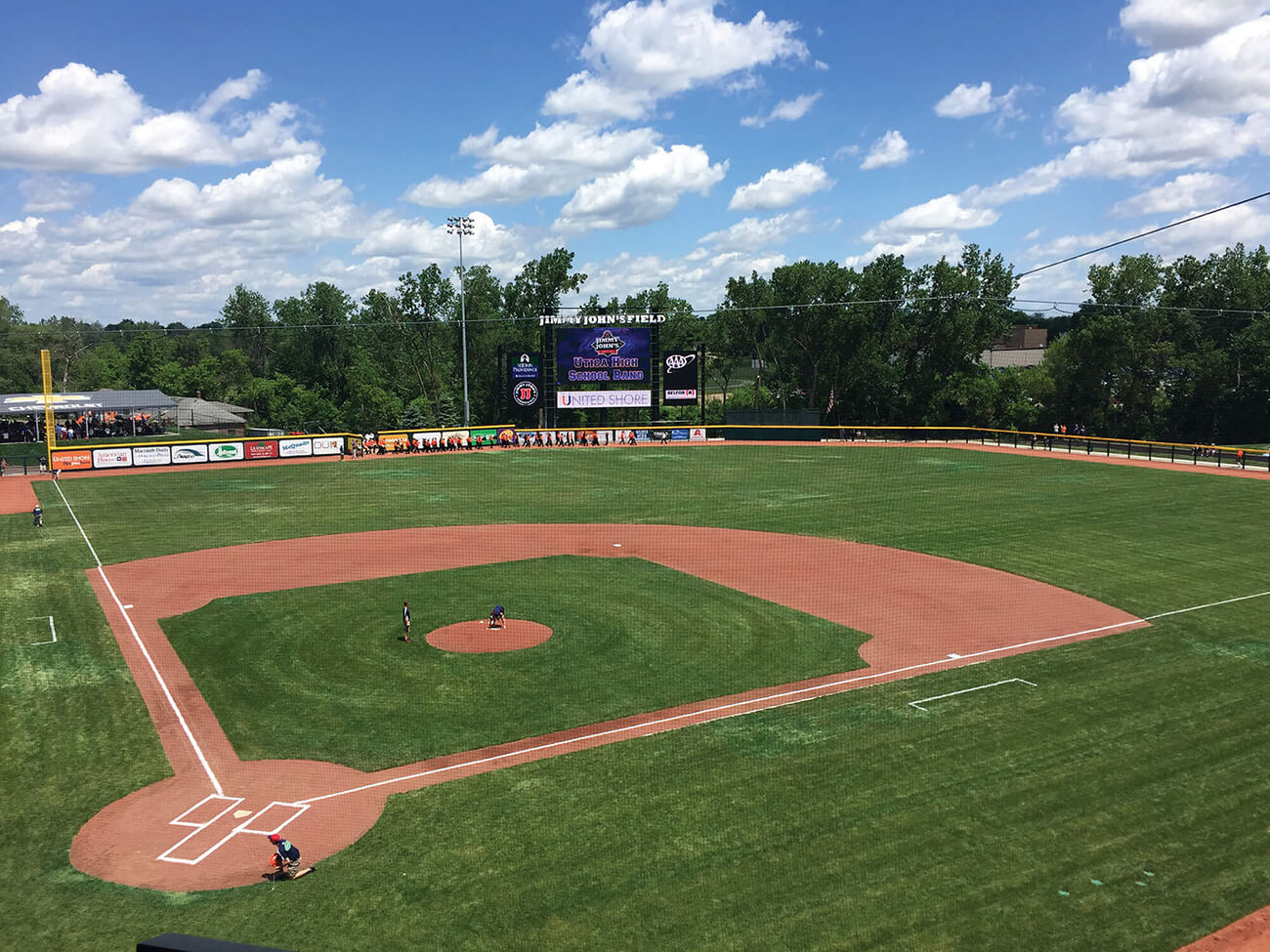Client Sector
Development/Redevelopment
Expertise
Construction Materials, Environmental
Location
Utica, MI

Development/Redevelopment
Jimmy John’s Field
The transformation of two landfills in the City of Utica into Jimmy John’s Field, a $15 million minor league baseball stadium with a 500-space public parking lot, community playground, and connection to established hiking and biking trails seemed daunting at first, if not impossible. But when the developer and community rallied to support the cause, they hit a home run.
General Sports & Entertainment, SME, the City of Utica, Macomb County, and other local supporters worked together to bring minor league professional baseball to metro Detroit. With help from the State of Michigan and the United States Environmental Protection Agency (USEPA), the team secured $3 million in funding to address environmental and constructability issues associated with the landfills at the Jimmy John’s Field site.
Redeveloping the landfill sites posed many challenges, including dealing with 15 to 30 feet of unconsolidated waste material that was buried along the east and west side of the Clinton River. The site also included 26,000 cubic yards of waste material from a failed 2007 development that was previously excavated and stockpiled on site.
The historic waste created environmental contamination and geotechnical settlement challenges. Another challenge was establishing a level playing field. Simply grading the site and removing waste material was not an option due to the cost premium of disposing all the waste material at a licensed landfill. SME led the project team to evaluate numerous grading and foundation scenarios to reduce the impact of contamination and settlement risks. The final plan incorporated deep foundations for site structures and strategically placing mechanically stabilized earth (MSE) walls to confine the historic waste and soil that was to remain on site.
Yet another challenge for Jimmy John’s Field was finding a way to install deep foundations with the uncertainty of what lies below the ground surface from years of undocumented dumping. The team designed stadium foundations utilizing 12 to 15-inch diameter pipe piles (micropiles). This eliminated the need for waste excavation and disposal costs. The 320 micropiles were installed through waste and into the underlying hardpan to support the structures, stadium lighting, and awesome 80-foot wide LED scoreboard.
SME also designed various environmental response measures to protect fans and the environment from the historic waste materials and related contamination hazards, including methane gas. We worked closely with the EGLE (formerly MDEQ), contractors, and suppliers to design and monitor a passive depressurization system beneath enclosed building spaces to collect and vent methane gas away from the buildings. The ball field, right field berm, and landscaped areas were engineered with a geotextile fabric layer to cover the waste materials, preventing direct contact and erosion.
Our team was passionate about revitalizing this site, a 75-year-old environmental challenge, for the community and bringing this wonderful asset to the city of Utica and to the Metro Detroit area.











